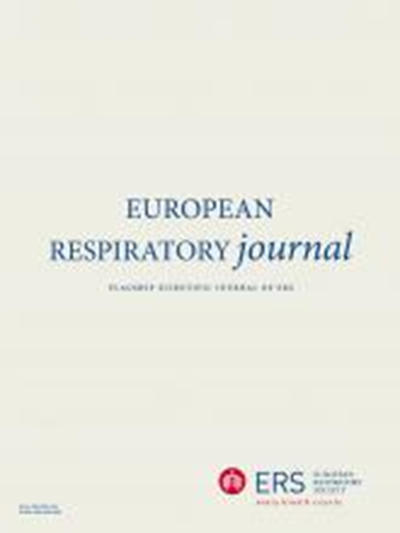欧洲呼吸学会和美国胸科学会对原发性纤毛运动障碍的诊断指南。
IF 21
1区 医学
Q1 RESPIRATORY SYSTEM
引用次数: 0
摘要
原发性纤毛运动障碍(PCD)是由bbbb55基因的致病变异引起的。PCD与早发性慢性湿咳和鼻窦炎、侧耳畸形、中耳疾病和生育能力降低有关。临床表现是不同的,诊断往往依赖于多项检查。美国胸科学会(ATS)和欧洲呼吸学会(ERS)此前已经制定了单独的诊断指南。在这里,ERS和ATS成员系统地回顾了实践中使用的诊断工具的文献,并使用GRADE(建议、评估、发展和评估分级)方法制定了统一的PCD诊断循证指南,并使用循证决策(EtD)框架制定了透明的决策过程。工作组小组制定了三个PICO(患者、干预、比较、结果)问题和三个叙述性问题。将高速视频显微镜(HSVM)、免疫荧光(IF)和鼻一氧化氮(nNO)的准确性与透射电子显微镜(TEM)和/或遗传学的参考测试进行比较。专家组强烈建议使用HSVM、IF和nNO作为TEM和/或遗传学诊断PCD的辅助检测。然而,没有任何辅助测试适合作为诊断PCD的独立测试,也没有任何单一的辅助或参考测试适合排除PCD。由于对治疗的影响,鼓励进行基因诊断。专家小组强调,检测应达到最低标准,并建议在有诊断经验的转诊中心对患者进行评估。在解释结果时应考虑基于症状的预测概率。本文章由计算机程序翻译,如有差异,请以英文原文为准。
European Respiratory Society and American Thoracic Society guidelines for the diagnosis of Primary Ciliary Dyskinesia.
Primary ciliary dyskinesia (PCD) is caused by pathogenetic variants in >55 genes. PCD is associated with early-onset chronic wet cough and rhinosinusitis, laterality defects, middle ear disease, and reduced fertility. The clinical presentation is heterogeneous, and diagnosis often relies on multiple tests. The American Thoracic Society (ATS) and European Respiratory Society (ERS) have previously developed separate guidelines for diagnosis. Here, ERS and ATS members systematically reviewed the literature on diagnostic tools used in practice and developed unified evidence-based guidelines for PCD diagnosis using GRADE (Grading of Recommendations, Assessment, Development and Evaluations) methodology, and a transparent process of decision-making using Evidence-to-Decision (EtD) frameworks. The Task Force panel formulated three PICO (Patients, Intervention, Comparison, Outcomes) questions and three narrative questions. The accuracies of high-speed video microscopy (HSVM), immunofluorescence (IF), and nasal nitric oxide (nNO) were compared to a reference test of transmission electron microscopy (TEM) and/or genetics. The panel gives strong recommendation for use of HSVM, IF, and nNO as adjunct tests to TEM and/or genetics for PCD diagnosis. However, no adjunct test is suitable as a standalone test to diagnose PCD and no single adjunct or reference test is suitable to exclude PCD. Pursuing a genetic diagnosis is encouraged due to the implication on management. The panel emphasizes that tests should meet a minimum standard and proposes evaluation of patients at a referral centre experienced in diagnosis. The pretest probability based on symptoms should be considered when interpreting results.
求助全文
通过发布文献求助,成功后即可免费获取论文全文。
去求助
来源期刊

European Respiratory Journal
医学-呼吸系统
CiteScore
27.50
自引率
3.30%
发文量
345
审稿时长
2-4 weeks
期刊介绍:
The European Respiratory Journal (ERJ) is the flagship journal of the European Respiratory Society. It has a current impact factor of 24.9. The journal covers various aspects of adult and paediatric respiratory medicine, including cell biology, epidemiology, immunology, oncology, pathophysiology, imaging, occupational medicine, intensive care, sleep medicine, and thoracic surgery. In addition to original research material, the ERJ publishes editorial commentaries, reviews, short research letters, and correspondence to the editor. The articles are published continuously and collected into 12 monthly issues in two volumes per year.
 求助内容:
求助内容: 应助结果提醒方式:
应助结果提醒方式:


